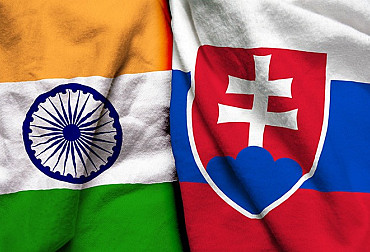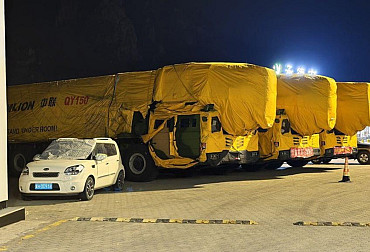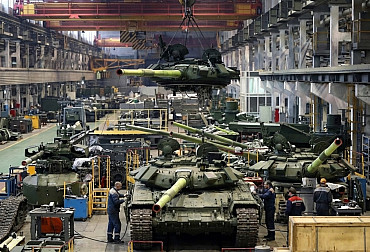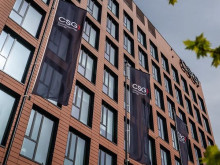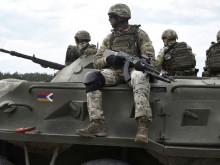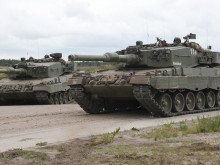Leopard 2A6, Valuk, Oshkosh JLTV: We visited Multinational Battlegroup in Slovakia
We recently had the opportunity to visit with a camera the Multinational Battle Group in Slovakia (MN BG SVK), which was established in the spring of 2022 as part of an effort to strengthen the eastern flank of the North Atlantic Treaty Organization in response to Russia's aggression against Ukraine. The third rotation of this group is currently operating in the military area of Lesht near Zvolen, where, in addition to Czech and Slovak troops, units from the United States, Germany and Slovenia are also operating. More than 1,100 soldiers from five different nations are currently deployed in Lešt' and the main combat assets, totalling 200 units, are Leopard 2A6 tanks, BVP-2 tracked infantry fighting vehicles, Valuk light armoured vehicles and HMMWVs. The command and control of the Multinational Battlegroup in Slovakia is entrusted to the Army of the Czech Republic, with Colonel Miroslav Vybíhal as the commander of the current 3rd company of MN BG SVK and Lieutenant Colonel Karel Zetocha as the commander of the multinational battalion.
Video: Leopard 2A6, Valuk, Oshkosh JLTV: We visited the multinational battle group in Slovakia / CZ DEFENCE
We were interested in how Lt Col Zetocha assesses the current readiness and combat capability of the group. The commander of the multinational battalion is satisfied. "For every soldier for whom the service of the homeland is meaningful and who wants to do the job, this is a great opportunity to train together and prepare for combat operations. Leaving aside any technical specifications, tank troops and mechanized infantry are like two brothers who get along and complement each other perfectly. By their very nature, mechanised troops and tank troops work together in an excellent way and complement each other in tactical activities," Colonel Zetocha said, adding that it would certainly be an advantage if our and foreign troops were on the same technical level. "On the other hand, the shortcomings in individual units do not mean that we would not be able to conduct effective combat operations together," says the battalion commander, adding that in the course of training, combined units are created, mixing tank and mechanised platoons, for example German and Czech ones, which are then commanded by the commander of a mechanised company and vice versa.
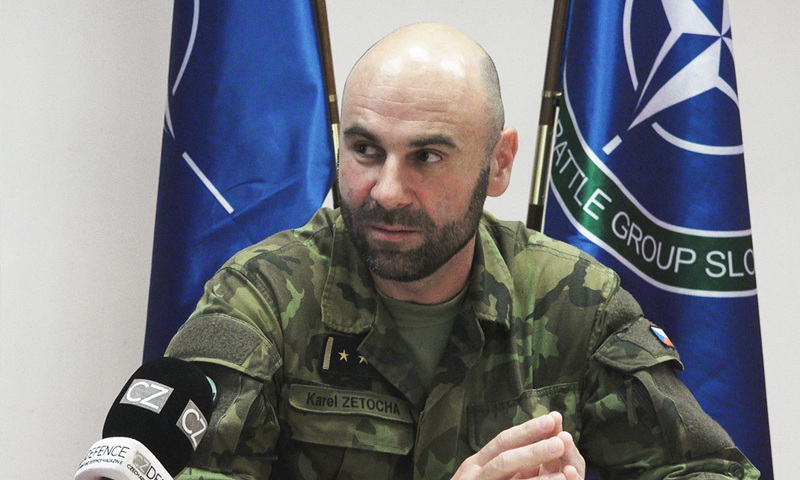 Picture: Commander of the multinational battalion Colonel Karel Zetocha | Jan Juřica / CZ DEFENCE
Picture: Commander of the multinational battalion Colonel Karel Zetocha | Jan Juřica / CZ DEFENCE
We asked to what extent the command of MN BG SVK monitors events on the Ukrainian battlefield, including the evaluation of the deployment of soldiers and combat equipment. "As for the lessons learned from the war in Ukraine, of course it is something we cannot miss if we are preparing to defend Alliance territory in conventional warfare. We look very closely at what is going on in Ukraine and think almost daily about how we can incorporate that into our own training," says Colonel Karel Zetocha. Colonel Sebastian Worgull, commander of the Bundeswehr tank company, confirms his words. And this is also an essential element of the mission of all our armies. One of my own tank companies is stationed here in Slovakia and has been sent here to train in this multinational environment, which is a great advantage and benefit for all of us to be trained and prepared to defend our countries in this way. The crucial steps for me are the ones we have taken with our partners, the Czech Republic and Slovakia, in the Leopard 2 tank support programme.
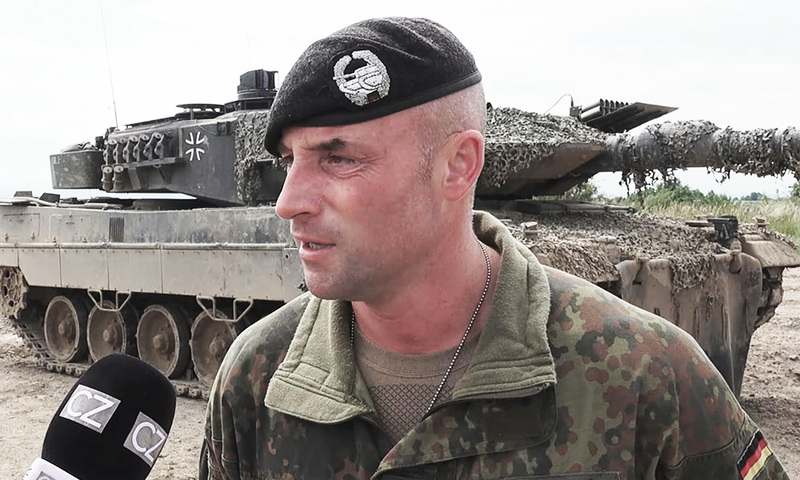 Picture: Tank Company Commander Colonel Sebastian Worgull | Jan Juřica / CZ DEFENCE
Picture: Tank Company Commander Colonel Sebastian Worgull | Jan Juřica / CZ DEFENCE
The most powerful weapon in this rotation is the German Army's Leopard 2A6 tank. The joint training of German Leopards with the 74th Mechanised Battalion from Bučovice is nowadays more than a necessary tool to best prepare for the future Leopard 2A8 tanks that the Czech Republic plans to purchase and to get familiar with their features. The Leopard 2A6 tank and its features were presented to CZ DEFENCE by Capt. Hendrik Grubert, tank platoon commander: "In the tank's turret, which is electrically controlled and completely silent when turning, we have 15 rounds and when the gun is loaded, the loader is already ready with the next round in his hand. When we fire, it takes up to three seconds before the next round is fully ready to fire, after that it is always five seconds. This is because that's exactly how long it takes for the powder to settle after the shot. Immediately after that, the tank commander has to take care of the change of position, because if we stay in one place, the enemy might detect our position and might start firing at us. So after the 2nd, or at the latest after the 3rd shot, we have to move to a new position to conduct fire in a dynamic style. Once we start running low on ammo, we turn the turret to 3 o'clock and can use the supply in the ammo vault in the undercarriage where we have 27 more rounds. So we can refill the turret magazine about twice in total. It takes a well-trained crew 5 to 10 minutes to load those 15 rounds from the chassis. Then at tank platoon level we always make sure that at least two tanks always have 'eyes on the enemy' and fully loaded, while two tanks use the time to refill any ammo fired. The life of the gun is 1,500 rounds, but it depends on maintenance. It can be fired for longer. So far, the longest target range is 4,000 meters. It was a wooden floating target on a pontoon at sea, about 2.5 meters wide. We hit it despite the crosswinds on the first shot. Generally, the probability of a hit is around 90%. We specifically had a hit probability of about 95% on one of the last exercises. We hit a total of 21 out of 22 targets."
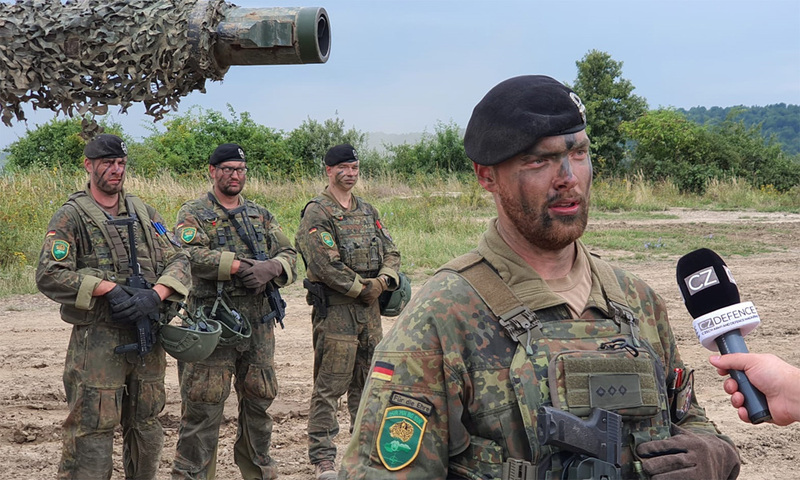 Picture: Moment from the interview with tank platoon commander Capt. Hendrik Grubert | Daniel Špalek / CZ DEFENCE
Picture: Moment from the interview with tank platoon commander Capt. Hendrik Grubert | Daniel Špalek / CZ DEFENCE
We took advantage of a unique opportunity and Capt. Grubert and asked him, as a tank commander, what he sees as the differences between the German 2A6 and 2A7 Leopards and the American M1 Abrams tank? "The Leopard favors firepower and speed. The Abrams focuses mainly on protection. Both tanks have the same 120mm Rheinmetall gun. They're both based on the same Cold War MBT 70. German tank doctrine plays a bigger role here. We rely on speed, fire superiority, and a savvy approach to problem solving and tactics, which we prefer to a static concept of tactics and combat. When defending or conducting a holding operation, we always remain concealed. Compared to other tanks, we can also reverse at 30-35 km/h."
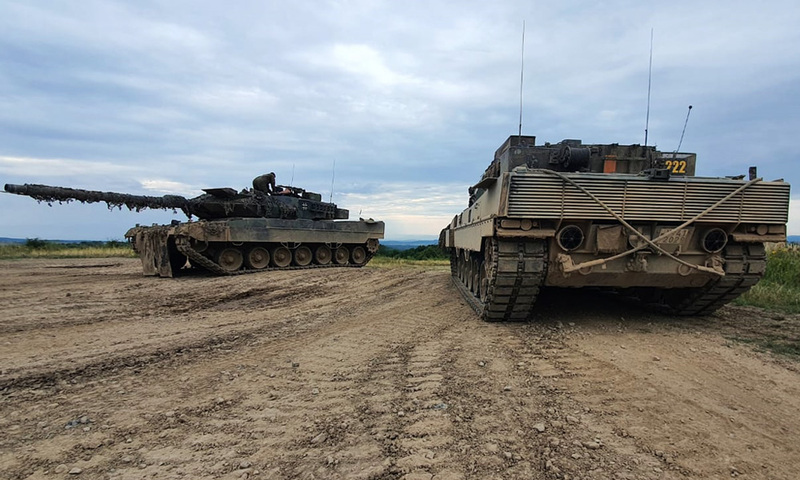 Picture: German Leopard 2A6 tanks | Daniel Špalek / CZ DEFENCE
Picture: German Leopard 2A6 tanks | Daniel Špalek / CZ DEFENCE
The Leopard 2A6 tank is a child of the Cold War, and everything is built as rugged as possible with the utmost effort to keep maintenance as simple as possible. That's why, according to Bundeswehr officers, all you have to do is not neglect regular maintenance. According to Captain Grubert, there are tanks in Leszno that serve for 2 months straight without any maintenance. "Now we have 4 tanks that have not had any maintenance so far. Everything was constructed very robustly and it is very easy to replace anything. For example, for everything related to protection, maintenance and repair of tracks, one needs about 3 or 4 tools and a little man power and you are ready to go again. It doesn't take long. And when we changed the engine, with the pre-fit and the recovery tank, you need 30 to 45 minutes and you have a new engine and you can go again," describes the qualities of the machine Capt. Grubert. The tank is also tested to detonate 10kg of explosives. There are also more durable versions like the A6M or A7V, which have better mine protection. Against conventional hand-launched weapons such as RPGs, the Leopard 2A6 tank is well protected, especially from the front. Compared to the Leopard 2A4, it also has increased protection against cumulative projectiles installed on the turret. The machine does not use any active protection, but has a lot of passive protection from the front. "In our tactics, we try to do mainly deep sorties, precision attacks and have covered wings. So we shouldn't have any threat from the side," explains Capt. Grubert.
Leopard 2A6 tanks are also operating on the Ukrainian battlefield, which is a valuable source of knowledge and information about the real combat characteristics of this tank. Colonel Sebastian Worgull states that no Ukrainian tanker operating in a Leopard tank has died so far (the interview took place in the second half of August). "Every member of the Ukrainian Leopard 2A6 tank crews has survived any Russian attack or hit so far. This also plays a big role for our own motivation. It is very encouraging, for us and other Leopard tank users, that these tanks are the ultimate firepower while providing the protection we need to survive in combat situations."
The 1st Brigade, 101st Airborne Division, U.S. Army, was tasked with conducting reconnaissance operations on this rotation. The rotation will gradually replace the U.S. Humvee reconnaissance vehicles with more modern and versatile Oskosh JLTVs. U.S. Army 101st Airborne Division Lieutenant Greg Cannata told CZ DEFENCE that he is looking forward to this change, if only because the JLTV will certainly bring with it new capabilities. He, too, appreciates the international cooperation within the international group in Slovakia: "The first month I was platoon leader, we participated in several exercises with other nations, and we conducted several infantry raids with the Germans and Czechs. It was a good experience to learn how to work with them. We're here to deter the enemy and strengthen mutual cooperation. I think everyone is enjoying themselves."
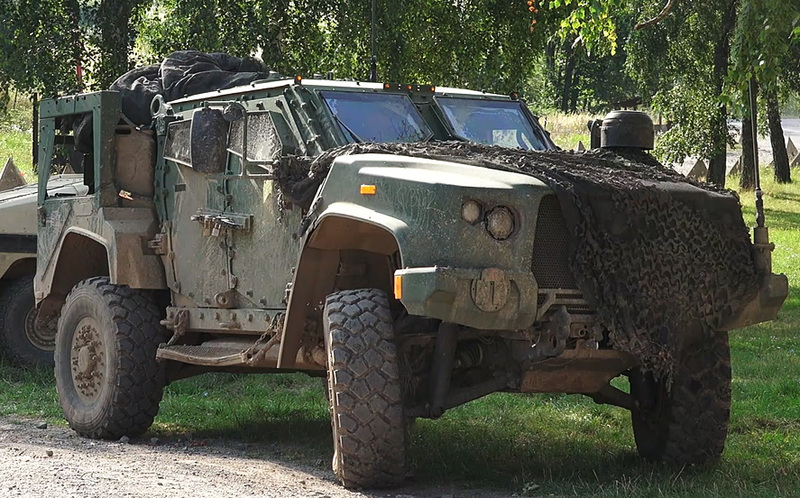 Picture: Oshkosh JLTV light tactical vehicle | Jan Juřica / CZ DEFENCE
Picture: Oshkosh JLTV light tactical vehicle | Jan Juřica / CZ DEFENCE
Also deployed as part of the third rotation of MN BG SVK is the light armoured infantry vehicle Valuk of the Slovenian Armed Forces, which is a licensed variant of the Pandur 6x6 and also a lighter brother of the KBVP Pandur II 8x8, which the Czech army has in its armoury. For the Slovenian Army, the MN BG SVK is the largest contingent in international missions or operations. "Most of the missions and operations in which the Slovenian Army has participated have been within the framework of peacekeeping corps. The main goal here in the multinational battle group in Slovakia is to train and cooperate with other nations and to fully integrate into this international battle group," explains company commander Capt. Luka Bjeladinovic. Two versions of the Valuk armoured personnel carrier were on display in Leszto, namely the transport and medical versions. The primary purpose of the vehicles is to transport infantry to squad level. The vehicle is armed with either a 12.7mm machine gun or an automatic 40mm grenade launcher. "There are usually a total of 9 soldiers in the vehicle - driver, gunner, commander and a landing party of 6 men. I act as the commander of the landing party," says the commander of the squad, nrtm. Matija Glažar.
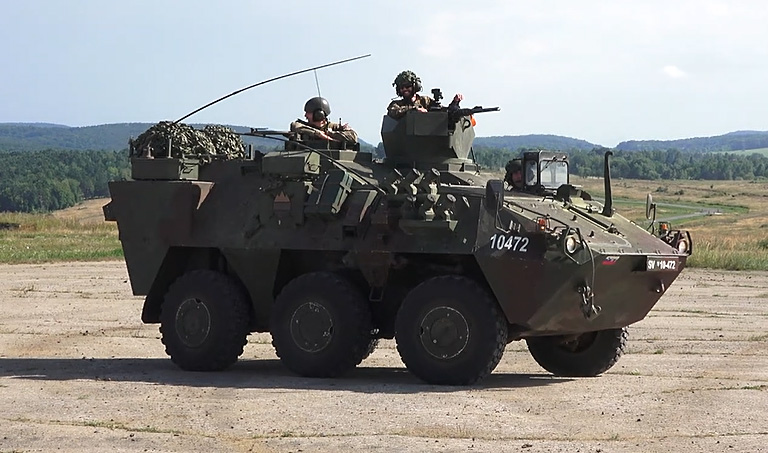 Picture: Armored Infantry Vehicle Valuk of Slovenian Armed Forces | Jan Juřica / CZ DEFENCE
Picture: Armored Infantry Vehicle Valuk of Slovenian Armed Forces | Jan Juřica / CZ DEFENCE
The combat readiness, high deployment and close international cooperation is the basis for the high quality of this multinational battle group, which was also confirmed to CZ DEFENCE by the commander of the multinational battalion, Lieutenant Colonel Karel Zetocha: "What I see here every day is an increase in combat readiness of the Czech Army units and all allies. I can already say that if we are ordered to defend the territory of the North Atlantic Alliance, we are able to move to the border and wage an effective defensive battle. And I dare say that anyone considering a possible attack on the territory of the alliance would have to think at least ten times about whether they want to go into that fight against us, because we would certainly not be an easy opponent. We are fulfilling the mission we have been given."













